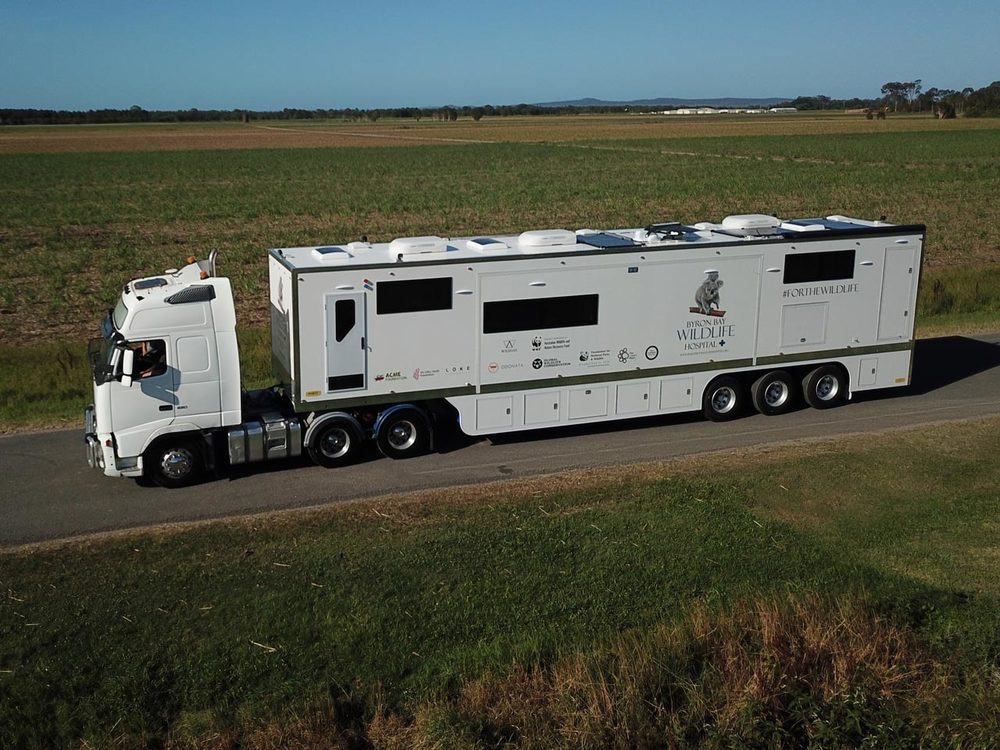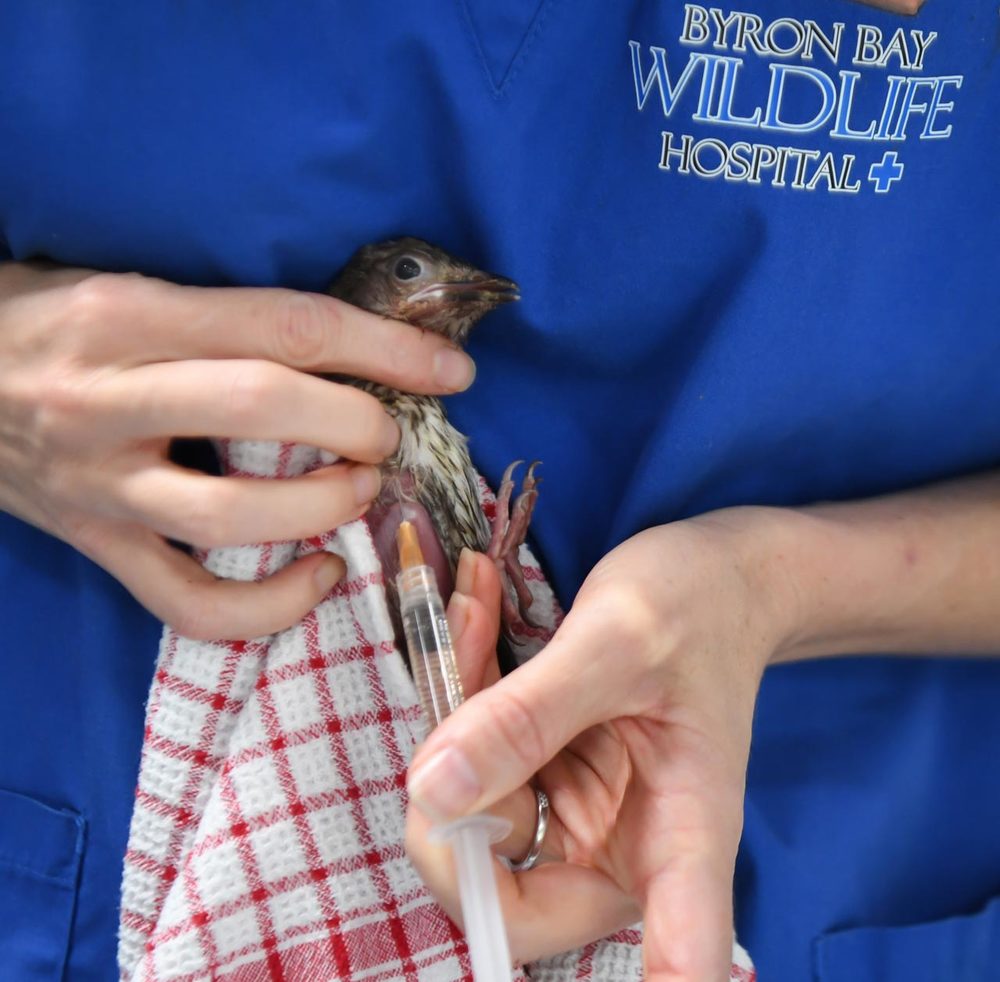New dedicated wildlife hospital tours to Lismore
Liina Flynn
13 May 2021, 6:39 AM
 Vets and vet nurses in the new mobile hospital. Photos: James D Morgan
Vets and vet nurses in the new mobile hospital. Photos: James D Morgan Local wildlife carers used to travel to Currumbin to take injured animals to a vet hospital, but everything has changed now that a new mobile wildlife hospital has opened - based in Byron Bay.
The new hospital is the first of its kind – and will tour to Lismore next Wednesday, to showcase the new 17.5 metre long mobile facility.
The hospital’s veterinarian Dr Bree Talbot invites wildlife carers, members of the public and local vets to come and meet the staff and bring any animals that need care, or a check up.
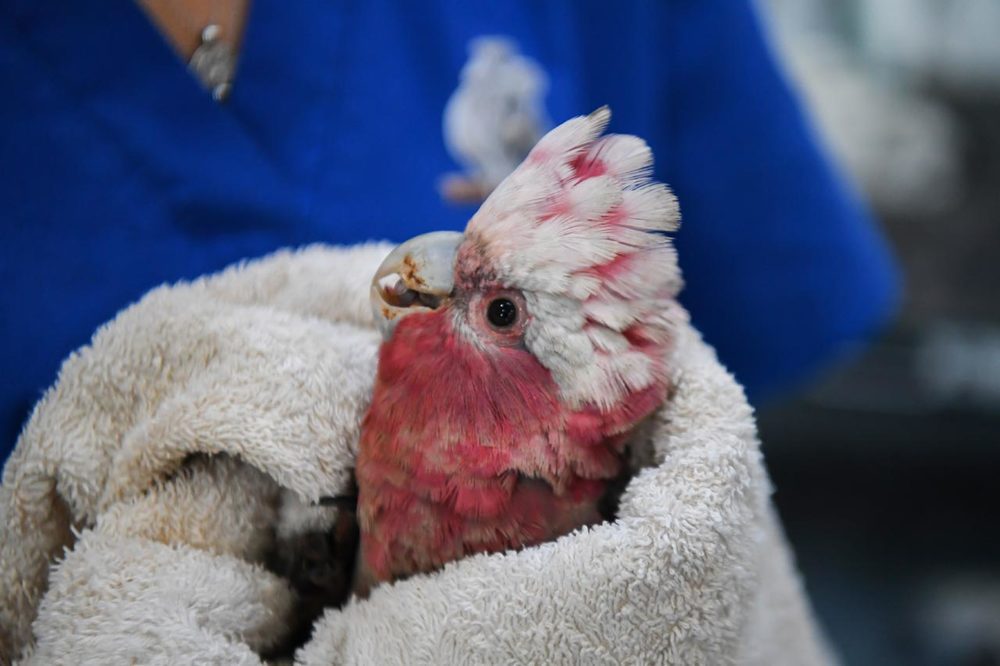

Overwhelmed local vets
Local WIRES NR volunteer and bat coordinator Lib Rutyenberg said the Byron Bay Wildlife Hospital (BBWH) has taken the load off local Lismore vets who are often so overwhelmed, they have no time to fit treating wildlife into their schedules.
“We have 23 vets in the Northern Rivers and four in the Lismore area,” Lib said. “All of them treat wildlife for free and give their time generously.
“Before, when we needed specialised treatment for an animal, we had to do a 200km round trip to Currumbin Wildlife Hospital, but now WIRES only needs to travel to Byron, and we take at least one animal there a day.”
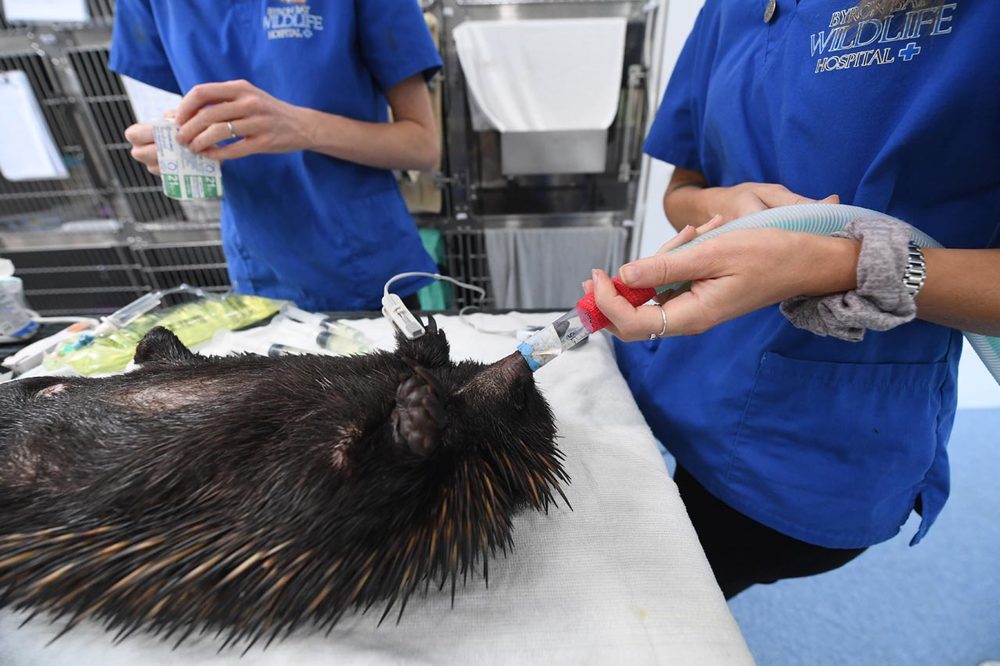
There are a number of wildlife care groups in the Northern Rivers area all utilising the new hospital – including Northern Rivers Wildlife Carers and Seabird Rescue.
Lib said the WIRES wildlife hotline gets 8000 inquires a year and about 20 a day. In the Spring busy season, call numbers peak to 40 or 50 a day. There are 300 bat rescues a year, and many are from bats found on barbed wire fences.
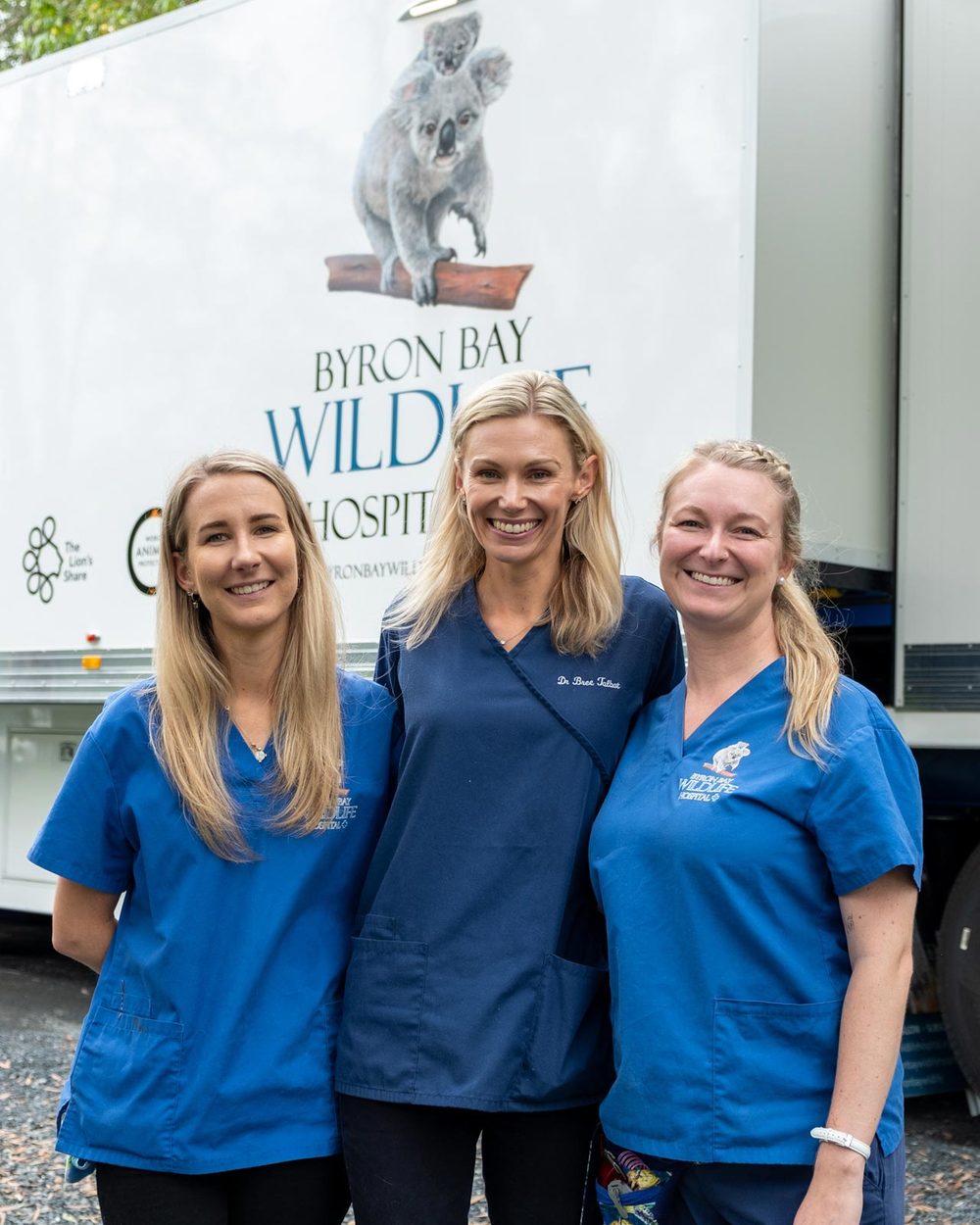
Vets and vet nurses: Katarina Fossey, Dr Bree Talbot and Hayley Farley.
Busier than ever before
Lib said even though it’s now Autumn, which is historically a quieter period for injured or traumatised animals coming in, the hotline has been busier than previous years.
It’s a situation echoed by BBWH vet Dr Talbot, who has treated 300 birds since the mobile hospital was completed in February -and treated over 700 animals.
“We are seeing so many animals being brought in, that the need for this hospital is obvious,” Dr Btalbot said.
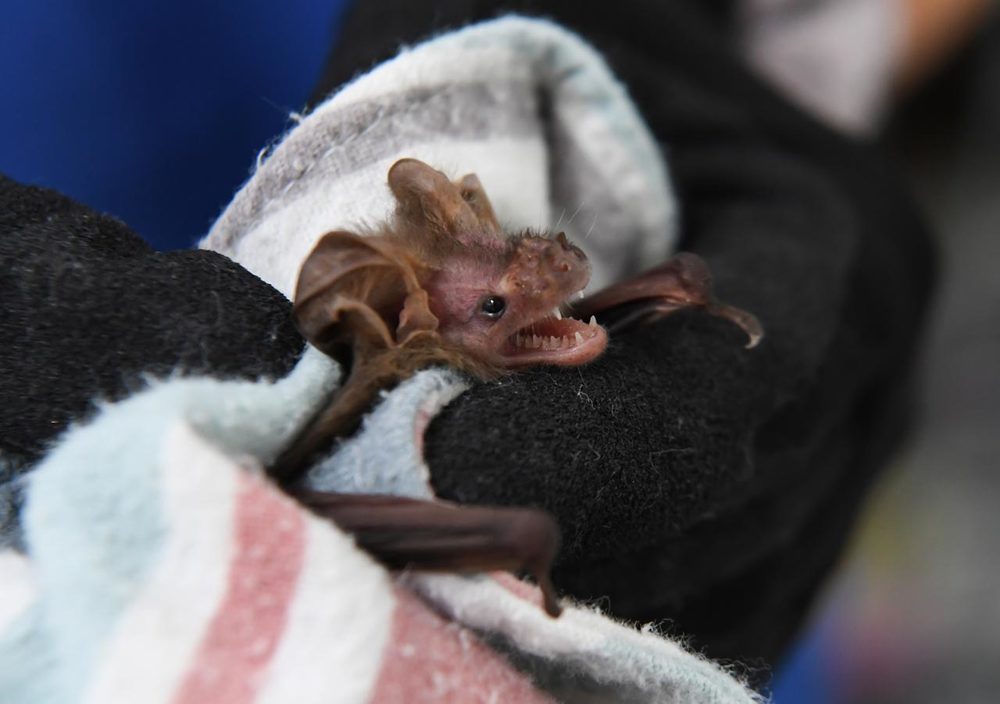
Need
Dr Talbot said the idea for the mobile hospital was born out of the Northern Rivers region being one of the most biodiverse regions in NSW and the need for wildlife care was more important than ever.
She said the plight of wildlife needing care really took the community’s attention after the massive bushfires hit and people saw the devastation and animals losing lives.
“That’s when the need for a mobile vet hospital was evident,” she said. “So, we could respond quickly and take the hospital to the animals, wherever they were.”
There’s no bricks and mortar in the BBWH, it’s a 17.5 metre long truck with an xray, triage and sterile surgery area. It’s stationed at Ewingsdale and can travel on the road if there is a crisis such as flood, fire or an event like heat stress affecting colonies of flying foxes.
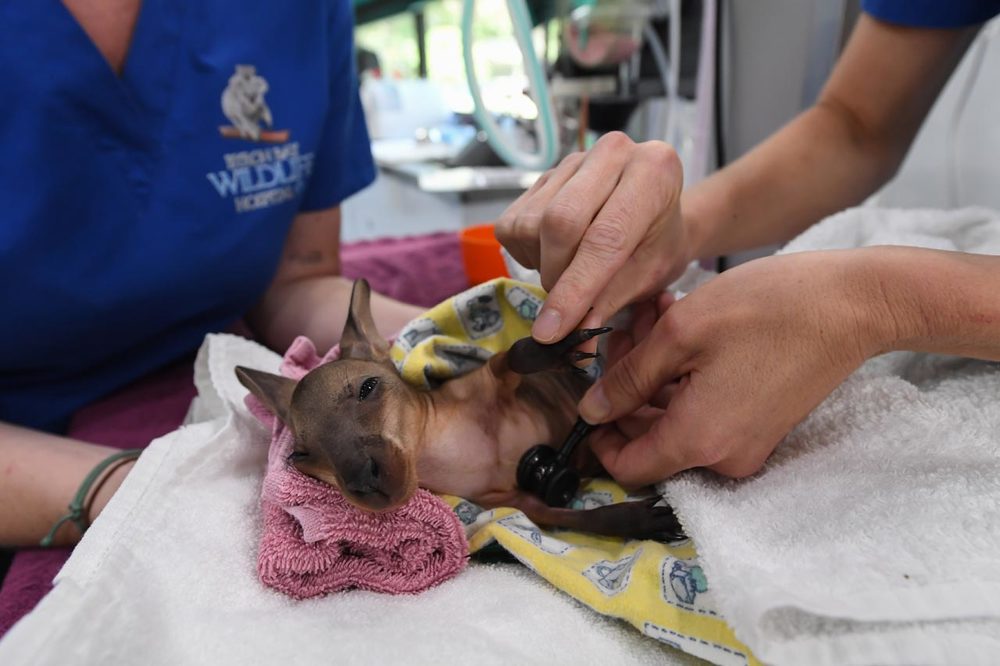
Bring the animals
“Vets, wildlife carers and also members of the public bring animals in,” Dr Talbot said. “We can help local vets who don’t have time or inclination to treat wildlife and take stress off them.
“It helps local carers don’t have to drive too far and helps the members of the public feel empowered too. They can call up and find out about how the animal is going.”
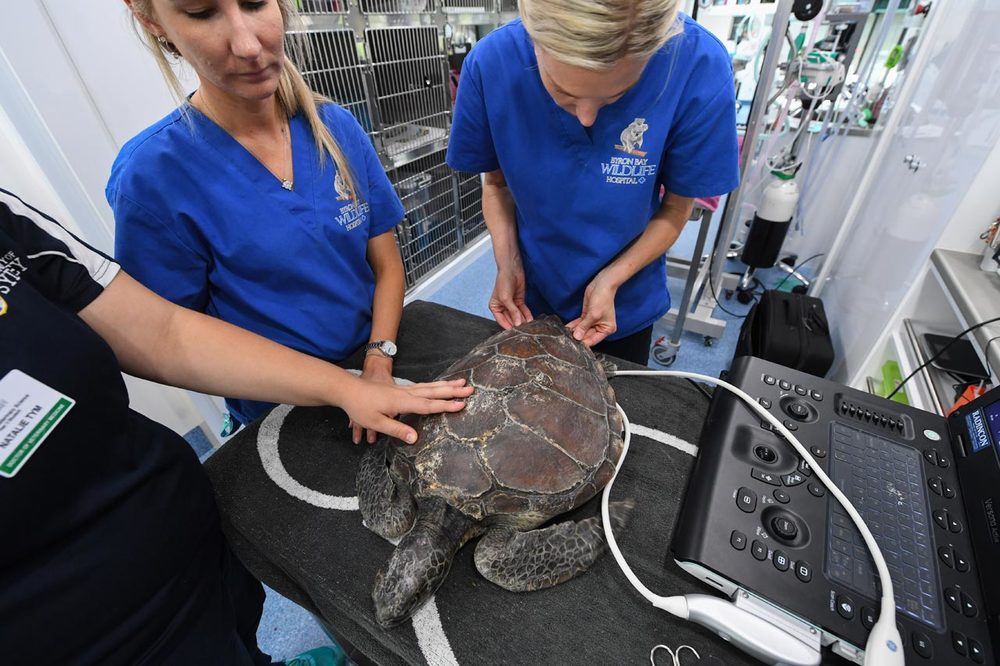
Echidnas, turtles and birds
While it’s mostly birds that are brought in, Dr Talbot said a member of the public recently brought in an echidna which had been hit by a car.
“It had bruises and a broken spine and soft tissue damage, so we treated it and gave it pain relief and released it back into the wild a week later,” she said
“We’ve also had sea turtles in - a shark bit a turtle’s flipper off and so we amputated the flipper. It’s pretty nasty and it was in rehab for three months while she learned to swim with three flippers.
“We released her two weeks ago and people report that they spot her swimming around.”
“Our aim is to work together to give Australian wildlife the quality treatment and care they deserve.”
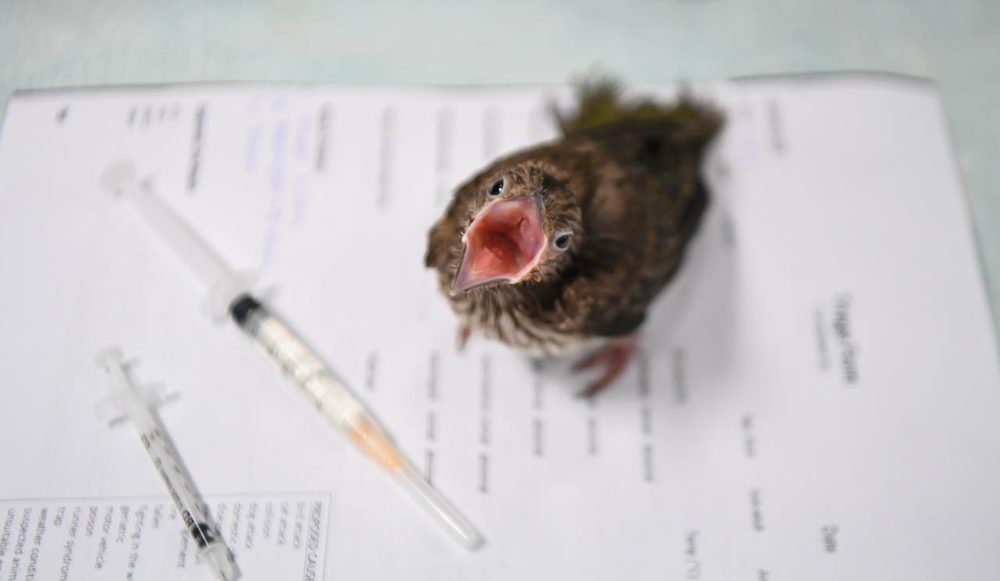
Charity
At the moment, the hospital is staffed by Dr Talbot and two vet nurses. Dr Talbot said she loves her work and does it because she is passionate about looking after wildlife.
The mobile hospital is a not for profit charity and relies on donations from the public to keep going.
“Wildlife don’t come in with a credit card to pay and we need money to keep afloat,” Dr Talbot said.
“We are currently open five days a week and we are trying to find more funding to open on weekends too and put on more staff.
“Our aim is to work together to give Australian wildlife the quality treatment and care they deserve.”
The mobile hospital is just starting to meet the needs of our community – and will work collaboratively with the new Northern Rivers Wildlife Hospital set to be build at Wollongbar.
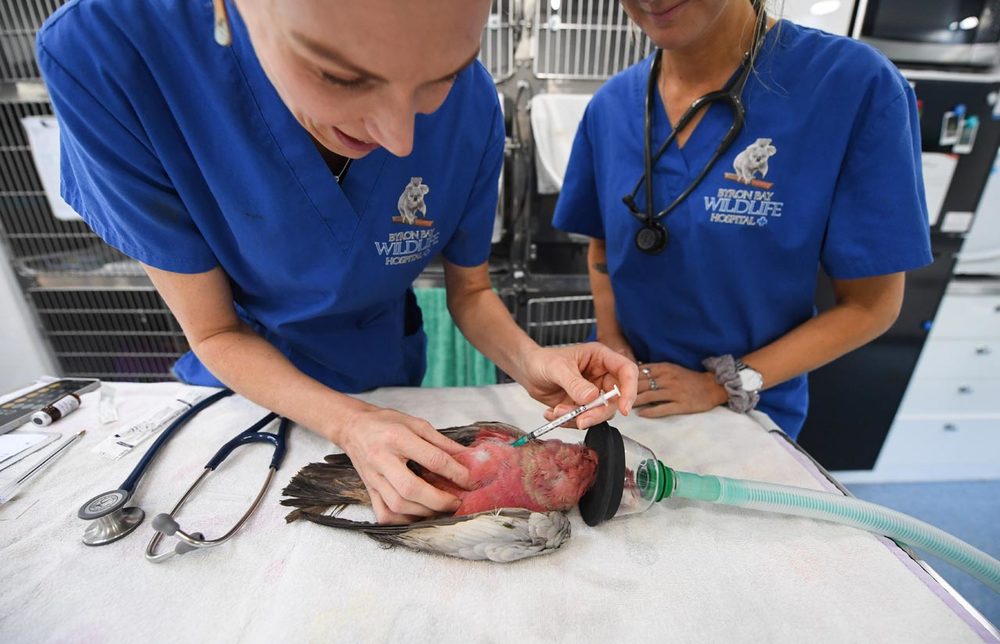
Tour event details
If you wish to come along and see the mobile wildlife hospital on tour, it will be visiting Southern Cross University next Wednesday May 19 from 9am to 12pm.
Visit the website for details about how to register to attend the session https://www.eventbrite.com/e/wildlife-hospital-regional-tour-tickets-151782885697
The Wildlife Hospital Tour is sponsored by World Animal Protection, the Foundation for National Parks & Wildlife, UD Trucks Australia and Volvo Group Australia.
